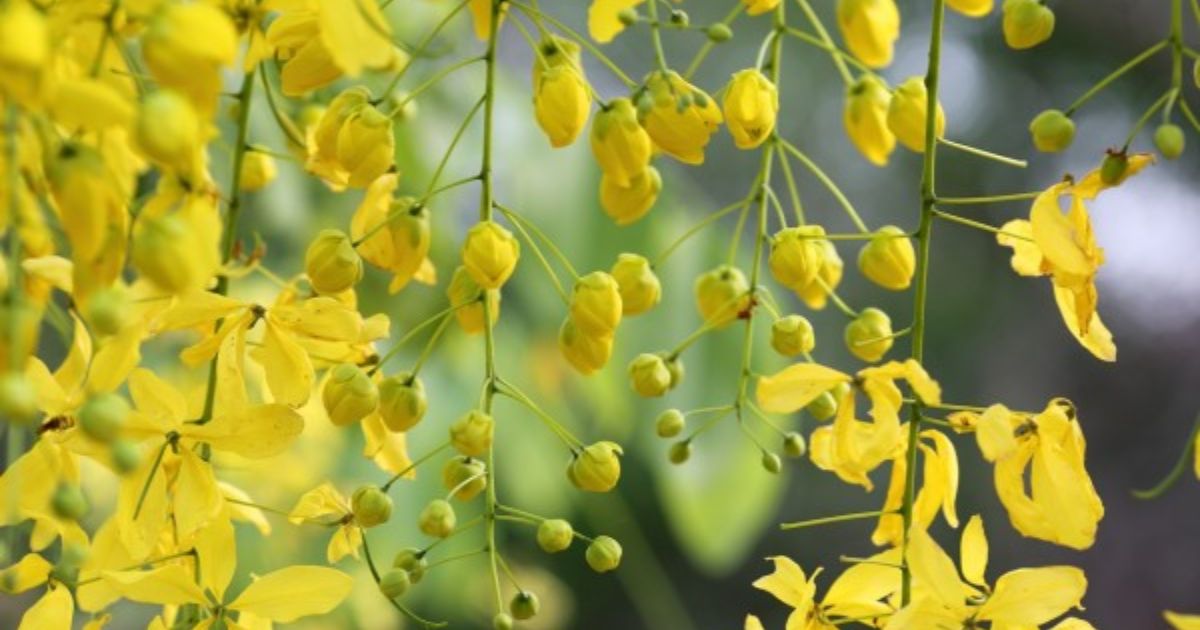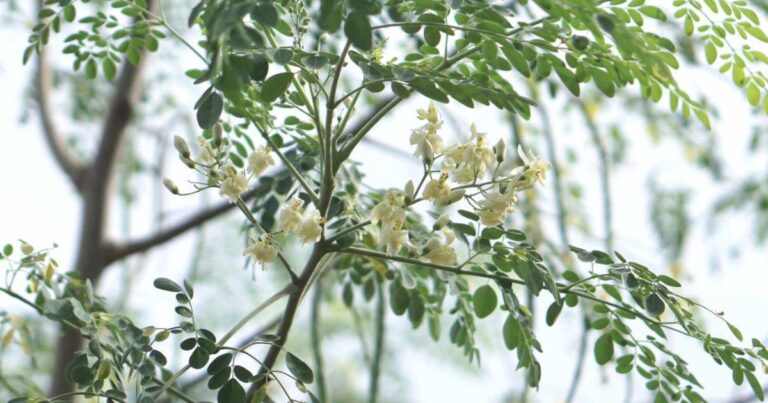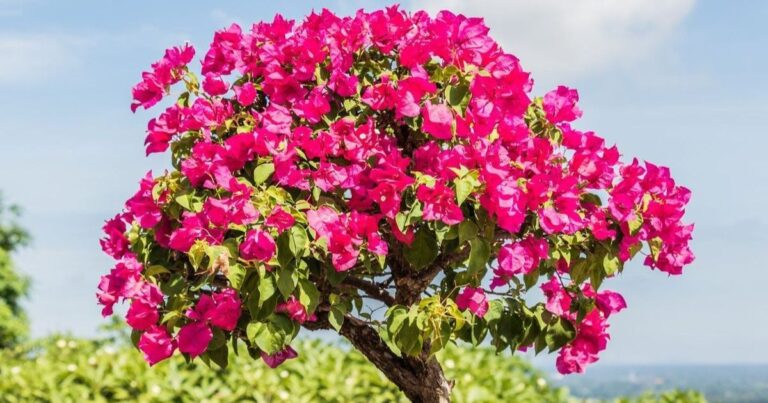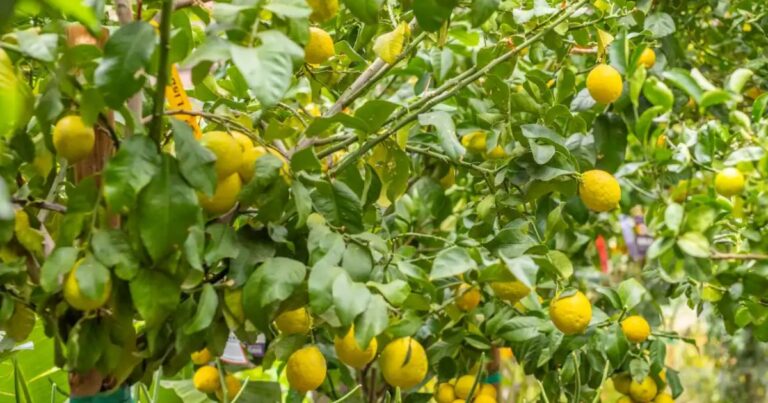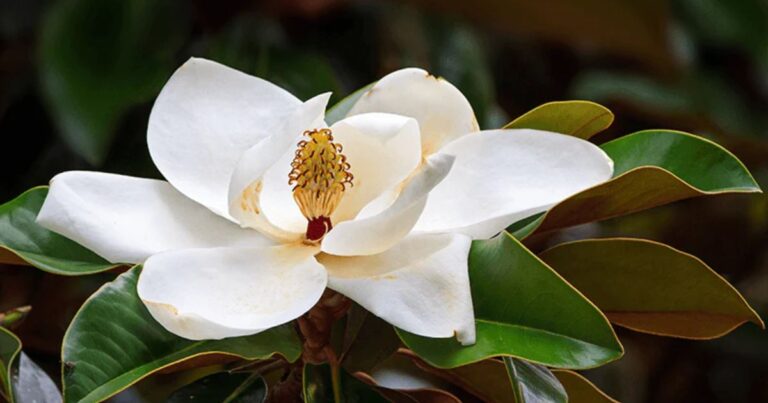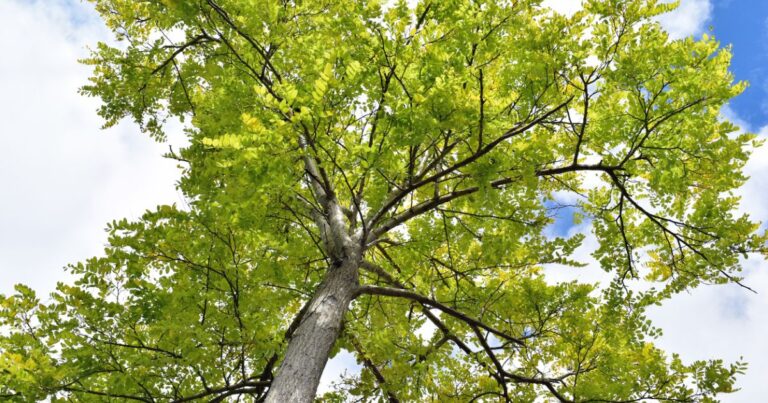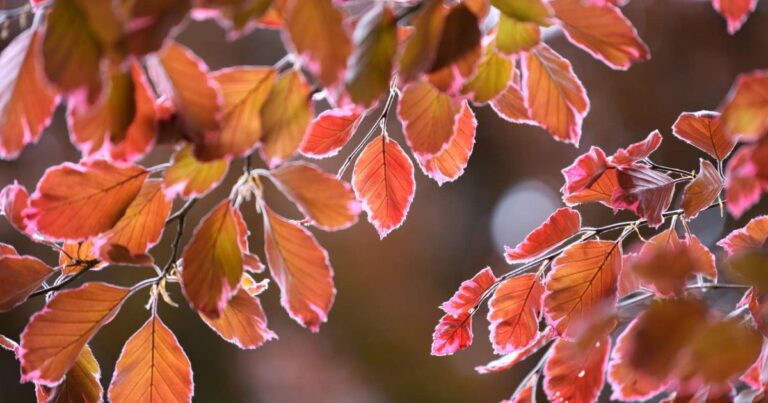Golden Rain Tree Care, Planting, Types, Facts, Seeds, Problems & Growth Rate
The Golden Rain Tree (Koelreuteria paniculata) is not just a beautiful addition to any garden; it’s a spectacle that transforms outdoor spaces into enchanting retreats. Understanding Golden Rain Tree care is essential for nurturing this stunning species.
In this guide, we’ll delve deep into the art of planting and maintaining these majestic trees, exploring their various types and intriguing facts that make them stand out in the botanical world. From selecting the right seeds to addressing common problems and monitoring growth rates, we’ll equip you with everything you need to cultivate your very own slice of golden beauty.
What Is A Golden Rain Tree?
A Golden Rain Tree, scientifically known as “Koelreuteria paniculata”, is a stunning spectacle of summer foliage that captivates gardeners and nature enthusiasts alike.
Originating from East Asia, this deciduous tree is characterized by its vibrant yellow blossoms that cascade like golden rain in late summer, creating a picturesque scene reminiscent of nature’s confetti. Beyond its visual appeal, the tree features intricate leaves and distinctive seed pods that develop in autumn, adding texture to any landscape.
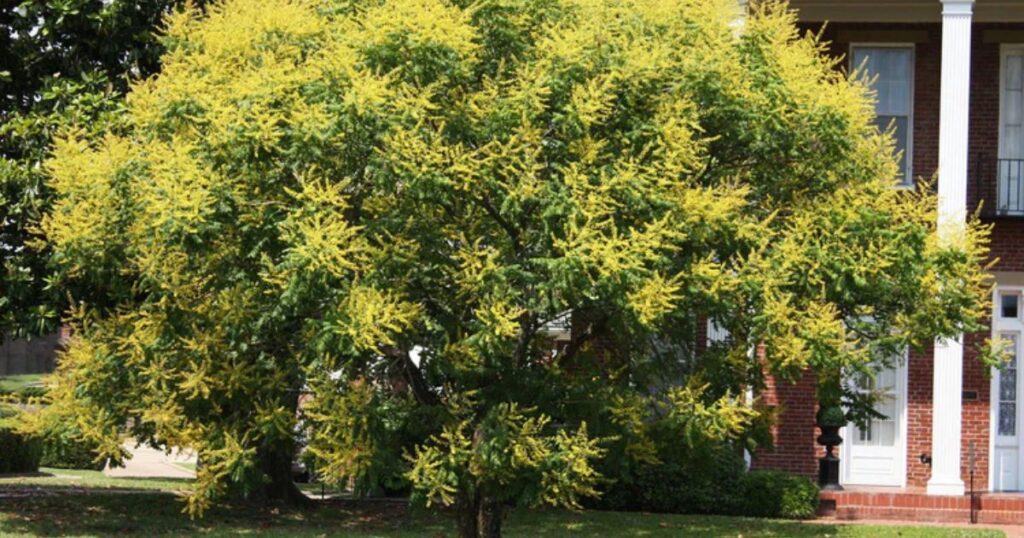
Golden Rain Tree Types
- Golden Rain Tree Florida
- Chinese Golden Rain Tree
- European Golden Rain Tree
- Autumn Golden Rain Tree
Golden Rain Tree Florida
Flourishes in Florida‘s subtropical climate with its striking yellow blooms that herald the arrival of summer. Unique among ornamental trees, this species offers a stunning visual display not just with its vibrant flowers but also through its distinctive seed pods that resemble lanterns in late summer.
These pods transition from green to a warm brown hue, adding seasonal interest for landscape enthusiasts long after the flowering period has ended. In Florida’s diverse ecosystems, the Golden Rain Tree is appreciated not only for its beauty but also for its resilience and adaptability.
Chinese Golden Rain Tree
The Chinese Golden Rain Tree, also a fantastic addition to any landscape for various reasons. This deciduous tree thrives in diverse conditions, showcasing resilience that complements its beauty. Throughout summer, the vibrant blooms give way to unique seed pods that dangle like lanterns, adding another layer of interest as they transition from green to a beautiful amber hue in the fall.
Beyond aesthetics, the Chinese Golden Rain Tree plays an essential role in urban ecosystems. Its wide canopy provides excellent shade, making it an ideal choice for parks and streetscapes where respite from heat is welcomed.
European Golden Rain Tree
The European Golden Rain Tree, with its striking clusters of yellow flowers, transforms any landscape into a vibrant spectacle from late spring to early summer. This deciduous tree is not just visually appealing; it’s also a marvelous conversation starter.
Its unique foliage—a mix of pinnate leaves that turn golden in the fall—creates a colorful display that captivates autumn enthusiasts and provides excellent coverage for those seeking a shady respite during hot summer days. Its papery seed pods, resembling lanterns, continue to enchant onlookers well into winter, adding an element of surprise to garden aesthetics.
Autumn Golden Rain Tree
The Autumn Golden Rain Tree, officially known as ‘Koelreuteria paniculata’, dazzles not just with its golden-hued flowers in late summer but also remains a stunning spectacle through autumn. As the temperature cools, the leaves transform into brilliant hues of yellow and orange, creating a contrast against the striking seed pods that hang like lanterns from its branches.
These papery husks rattle gently in the wind, adding an enchanting auditory element to your autumn garden. But what truly sets this tree apart is its adaptability; it thrives in various soil types and tolerates urban pollution remarkably well. This makes it an excellent choice for city landscapes where biodiversity is too often sacrificed for construction.
How to Plant A Golden Rain Tree?
Planting a Golden Rain Tree, known for its stunning yellow flowers and graceful form, requires careful attention to both site selection and soil preparation. Begin by choosing a location with full sun; these trees thrive in well-drained soils that allow their roots to spread freely.
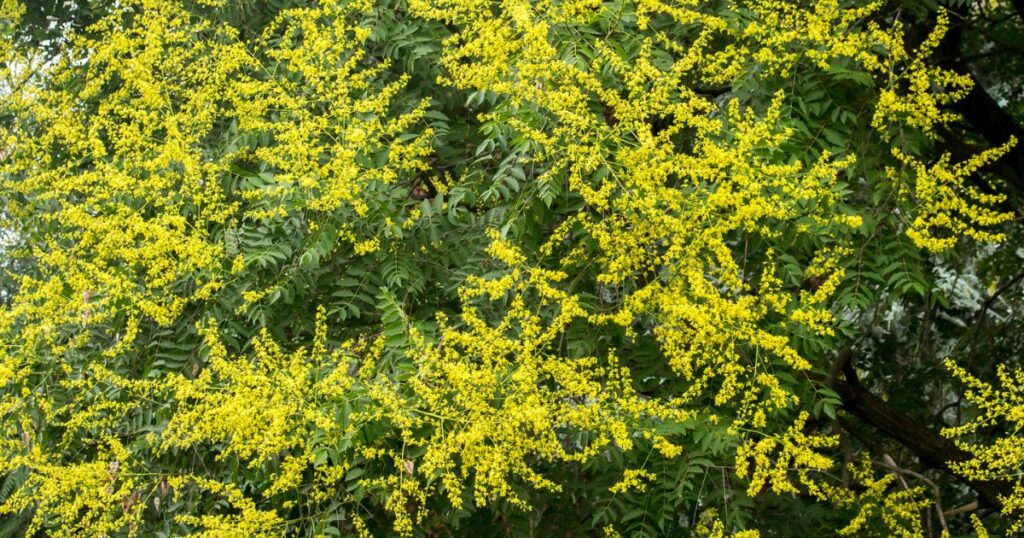
If you have heavy clay or compacted earth, consider amending it with organic matter like compost or aged manure to enhance drainage and fertility. A planting hole should be wider than the root ball but only as deep as the root itself.
Once planted, nurturing your Golden Rain Tree involves minimal maintenance but offers rich rewards when done right. During dry spells, regular watering will support young saplings as they establish.
Golden Rain Tree Seeds
Encased in delicate, papery husks, these seeds not only serve as a means of propagation but also create a natural spectacle when they fall to the ground. This visual feast serves both ecological and aesthetic purposes—providing sustenance to birds while enriching the landscape with bursts of color.
Golden Rain Tree seeds, with their distinct and vibrant appearance, are a testament to nature’s artistry. They play an essential role in the life cycle of the tree, encapsulating stories of resilience and adaptability. When planted, they can grow into magnificent ornamental trees that produce clusters of bright yellow flowers—often described as cascades of sunlight—that attract pollinators like bees and butterflies.
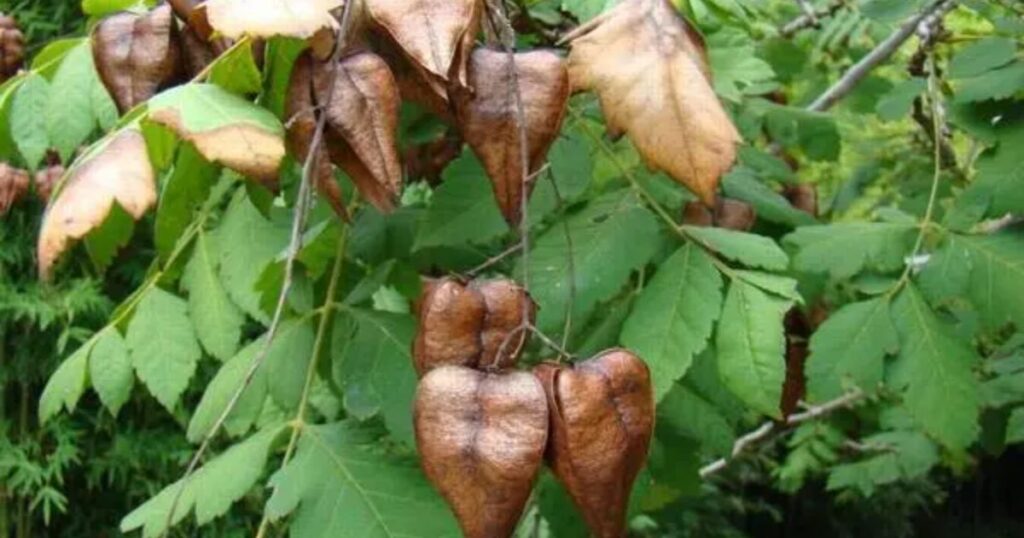
Golden Rain Tree Seed Pods
These distinctive seed pods are notable for their lantern-like appearance, resembling miniature golden balloons strung along slender branches. As they mature through late summer into fall, the vibrant green pods transition to a warm yellow hue, creating a spectacular visual display that invites admiration in gardens and parks alike.
Golden Rain Tree Leaves
Golden Rain Tree leaves, originating from the South American Tropezia garbage tree, captivate with their unique aesthetic and ecological role in urban landscapes. The compound leaves are made up of numerous leaflets that emerge in vibrant shades of green, creating a lush canopy during warmer months. As autumn approaches, these leaves transition into a stunning yellow and gold before gracefully falling to the ground.
Golden Rain Tree Invasive
In many regions, this seemingly innocuous tree has emerged as an invasive species that disrupts local ecosystems. Its rapid growth and prolific seed production enable it to outcompete native flora, overshadowing smaller plants and compromising biodiversity.
Despite being widely planted for ornamental purposes, it poses a significant threat to natural habitats. From urban settings to subtropical regions, this resilience often leads homeowners and landscapers to overlook its invasive potential.
Golden Rain Tree Flowers
Golden Rain Tree flowers, with their vibrant yellow blooms, offer a dazzling display that can transform any landscape into a sunlit haven. Each delicate flower clusters in pendulous racemes, reminiscent of cascading golden jewels.
This striking visual appeal is heightened in late spring and early summer when the trees burst forth with abundant blossoms, creating a breathtaking contrast against lush green foliage.
Golden Rain Tree Growth Rate
The Golden Rain Tree, which typically varies between 12 to 24 inches per year. This steady development allows the tree to establish itself in many landscapes without overwhelming surrounding flora. Interestingly, the growth pace can be influenced by several factors including soil quality, sunlight exposure, and local climate conditions.
Those who plant it in nutrient-rich, well-drained soils will often see a more vigorous upward surge. Another fascinating aspect of Golden Rain Tree growth is its unique capriciousness; while some trees may only reach their mature height of 30-40 feet over several years, others have been reported to surpass expectations under optimal conditions.
Understanding this variability opens doors for gardeners and landscapers alike—potentially investing strategic efforts into care practices such as pruning and mulching that align with the tree’s developmental milestones.
How To Golden Rain Tree Care?
Taking care of a Golden Rain Tree requires an understanding of its unique needs. Pruning is essential not just for aesthetics but also to promote healthy growth. During the dormant season, remove dead or crowded branches to encourage light and air circulation within the canopy. This practice not only enhances its stunning yellow spring bloom but also helps prevent diseases that could affect the tree’s vitality.
Watering is another key aspect; while these trees are drought-tolerant once established, young saplings benefit from consistent moisture in their first few years. Mulching around the base can retain soil moisture and suppress weeds, creating a healthier environment for growth. Fertilizing with a balanced fertilizer in early spring can boost blooming and overall health.
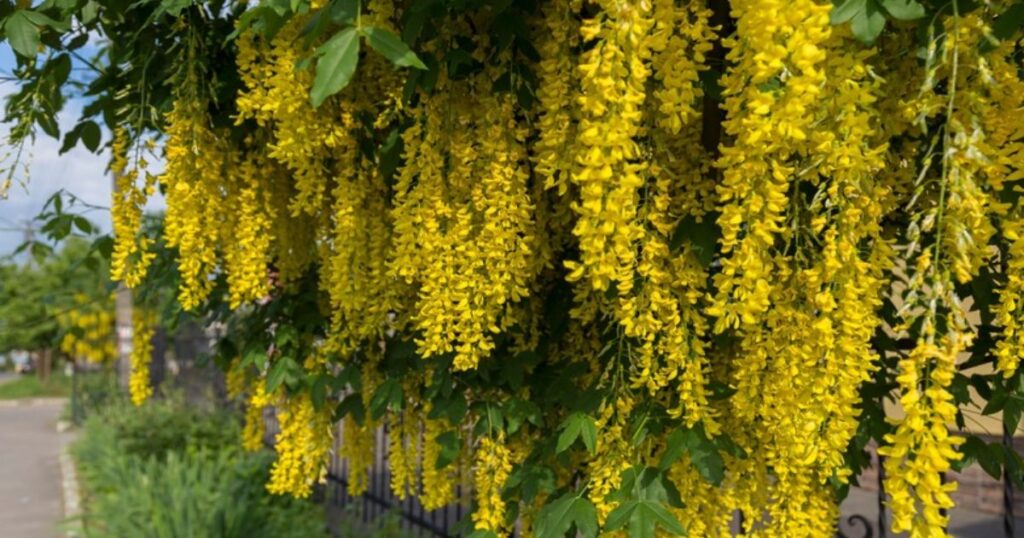
Are There Any Golden Rain Tree Problems?
- Invasive Nature: Golden Rain Trees can become invasive in some regions, spreading rapidly through self-seeding. Their seeds are highly prolific, potentially overtaking native plants and disrupting local ecosystems.
- Pest Susceptibility: While generally hardy, these trees are prone to various pests like scale insects and aphids. Unlike other trees that may fend off certain pests naturally, the Golden Rain Tree often requires monitoring and occasional treatment to prevent infestations.
- Shallow Root System: The root system of the Golden Rain Tree is relatively shallow, making it more susceptible to wind damage or soil erosion. This can lead to structural instability over time and necessitates careful planting away from pathways or buildings.
- Allergenic Properties: For those prone to allergies, the pollen produced by Golden Rain Trees can exacerbate symptoms during blooming seasons. Consider alternative landscaping options if you live in areas where pollen sensitivity is prevalent.
- Limited Longevity: Although initially attractive, their lifespan tends not to exceed 50 years under ideal conditions. Understanding this limitation helps gardeners plan for future replacements rather than maintain aging specimens indefinitely.
Golden Rain Tree Uses And Benefits
- Ornamental Value: This tree makes an excellent choice for urban landscaping, providing beautiful seasonal displays with its clusters of golden flowers that attract pollinators like bees and butterflies.
- Shade Provider: Its broad canopy offers ample shade, making it an ideal specimen for parks and gardens where families can enjoy outdoor activities without the harsh sun beating down.
- Ecological Benefits: With its ability to support local wildlife, including various bird species seeking food or nesting sites, the Golden Rain Tree promotes biodiversity in both urban and rural settings.
- Medicinal Properties: Traditionally used in herbal remedies, extracts from the tree’s bark have been employed to treat ailments such as inflammation and fever—an area gaining interest in modern herbal medicine.
- Soil Improvement: The tree’s deep root system aids in soil stabilization and prevents erosion, particularly on steep landscapes or areas prone to landslides.
- Cultural Significance: In some regions, this tree symbolizes prosperity and good fortune; planting one could be seen as an auspicious act aimed at attracting happiness into one’s life or community.
- Hygienic Uses: The fallen flowers can serve as a natural mulch that decomposes quickly while adding nutrients back into the soil—which promotes healthier plant growth around them.
Golden Rain Tree Vs Bougainvillea Tree Care
To care for the Golden Rain Tree, known for its beautiful yellow flowers and elegant leaves, timing is key. These trees grow best in well-drained soil and need regular watering during dry periods. However, they can handle drought once they are established. To keep the tree strong, prune it every year. This helps air and sunlight reach the tree, boosts flowering, and prevents fungal diseases, which many people forget to do.
Bougainvillea Tree exudes vibrancy with its flamboyant bracts that transform any garden into an explosion of color. While these beauties love sunlight, they flourish best with intentional neglect—overwatering is the bane of their existence. A light feeding with fertilizer during growing seasons supports prolific blooms without excessive growth.
Conclusion
The Golden Rain Tree care and attention to its specific planting needs, this resilient tree can thrive in various conditions while providing vibrant yellow flowers and attractive seed pods. Understanding the different types of Golden Rain Trees and their potential growth challenges will empower gardeners to make informed decisions about their cultivation. By staying vigilant against common problems and ensuring optimal growth conditions, you can enjoy the beauty of this unique tree for many years.

